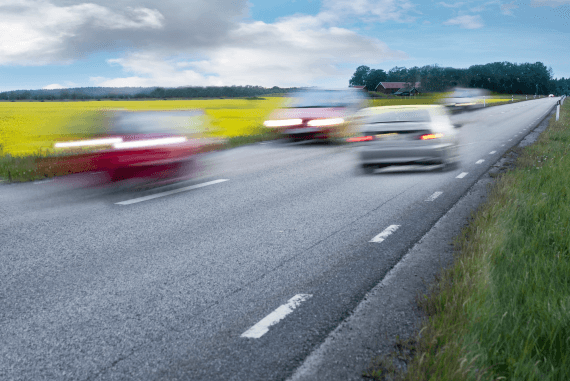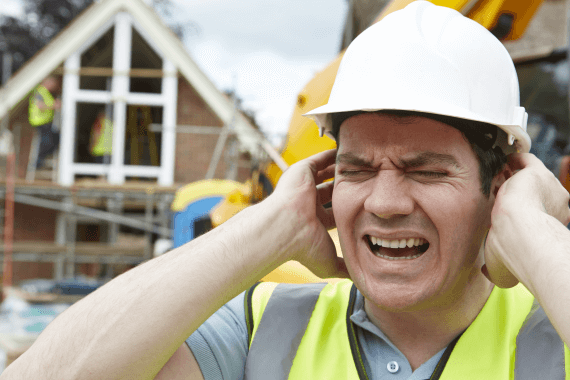- Home ››
- Health and Safety Training ››
- Noise Safety ››
- Roads - Noise, Environmental & Health and Safety Issues
Roads - Noise, Environmental & Health and Safety Issues
Introduction

Roads are noisy and dangerous places for both people and animals, or rather it is the vehicles which travel along the roads which create the danger. Numerous risks and hazards to health and safety exist, not to mention environmental issues which also have a knock-on effect upon the well-being of living creatures.
A road can be a frightening, confusing and dangerous place for a human being, so it is even more so for an animal that does not understand what it is! This is why those associated with road planning often have to take into account the safety and well-being of both people and animals. An increasing number of roads now have features such as animal crossing paths underneath – such as for hedgehogs and amphibians for instance – which allows the creatures to cross underneath the busy road without having to risk their lives avoiding fast moving cars.
Health and Safety Risks
As far as people are concerned, the most immediate health and safety danger involves a collision, either between two or more vehicles or between a vehicle and a cyclist or pedestrian. The seriousness of these incidents has resulted in numerous measures being created and introduced to try and keep all road and pavement users safer including:
- Better impact protection on cars can protect occupants in the event of a collision with another vehicle or object
- Lower speed limits in certain areas such as built-up zones where pedestrians and cyclists are more likely to be present
- Greater enforcement of speed limits through the use of fixed speed cameras
- Traffic calming measures in built-up areas such as humps and chicanes
- Introduction of dedicated cycle lanes to segregate cyclists and motorists
Pollution also Creates a Danger to Health and Safety and the Environment
The majority of road users will be vehicles powered by traditional combustion engines. These give off toxic exhaust gases which contain substances harmful to life such as carbon monoxide and other hazardous fumes. Not only will these gases be damaging to the environment as they rise into the atmosphere, but they also pose a threat to the health and safety of people who breathe in the gases.
This is especially the case in built-up cities where not only are there a lot of vehicles often stuck in traffic jams. Unlike an open country road which has plenty of space on either side, the exhaust fumes from cars in a city can be prevented from quickly dispersing by the presence of tall buildings on both sides of the road. This traps a lot of the poisonous gas at road/street level, which causes problems for everyone breathing in these fumes. For those who live and work in cities, and so are exposed to these fumes on a daily basis, long-term health issues can ensue such as respiratory conditions.
Noise Nuisance from Roads
Most vehicles travelling along roads are noisy, which can be a particular nuisance for those who live next to a busy road, not to mention dangerous for them as they walk near their house or have to exit their driveway onto the carriageway.
Whilst some will have been aware of the road before they moved in, others may find that a new road is constructed near to where they live or an existing one upgraded to carry more traffic. This can be particularly distressing as not only does it create a greater danger, it also creates a lot of noise and can lower house prices. As such, the building of a new road can be particularly distressing for the residents already living in the location.
Sirens and Noise Pollution
Sirens are a common presence in modern life, particularly in built up areas such as city centres. They are designed to be heard, either to scare people or animals away or to alert a person to the presence of something such as an approaching emergency services vehicle. Because they are intended to be heard some distance away they are often loud and consequently have the potential to damage the hearing of those nearby.
Disruption To Sleep in Cities

Although the emergency services will try to avoid using sirens during the nights and early hours of the morning - instead relying on the flashing lights to draw a driver's attention to them - there will still be times when they will have no choice, particularly in a built-up city which will still be busy and have some congestion even during the middle of the night.
This noise can affect the sleeping patterns of residents living in the city. This can be a large number of individuals in big flat/apartment complexes. The disturbance can have effects on the psychological health and wellbeing of these residents therefore, causing problems such as fatigue, increased stress levels, raised blood pressure and altered mood/behaviour.
It is for this reason that noise will be mentioned on those health and safety training courses that incorporate elements of psychological health and wellbeing in the syllabus.
What Can Be Done?
Actions and precautions which can be taken vary upon the specific sirens in question. Whilst it would not be practical to ask or expect emergency services not to use sirens at night, residents can install greater soundproofing to windows such as double or even triple glazing which will keep more sound out of the room.
As far as other alarms and sirens are concerned, there is not a great deal that individuals can do as they are designed to warn people, so if they need to be alerted then the siren will sound, and they need to be loud to achieve this objective and ensure there are not people in the building who have not heard the alarm.
Although certain actions can be taken like wearing ear protection when testing fire and smoke alarms for example, often people will have little choice than to suffer from a loud alarm or siren if a situation arises which causes it to sound. In an emergency, the effect on their hearing may be the least of their concerns at that moment in time!
Related Noise Pages:
- Aircraft Noise
- Construction Site Noise & Health and Safety Training
- Farm Noise Nuisance & Health and Safety Issues
- Health and Safety, Noise and Prevention
- How Fitting a Larger Fan May Cause Noise Health and Safety Issues
- Noise Risks and Management's Attitude to Health and Safety
- Noisy Printers to Quiet Ones - A Benefit for Noise Health and Safety


